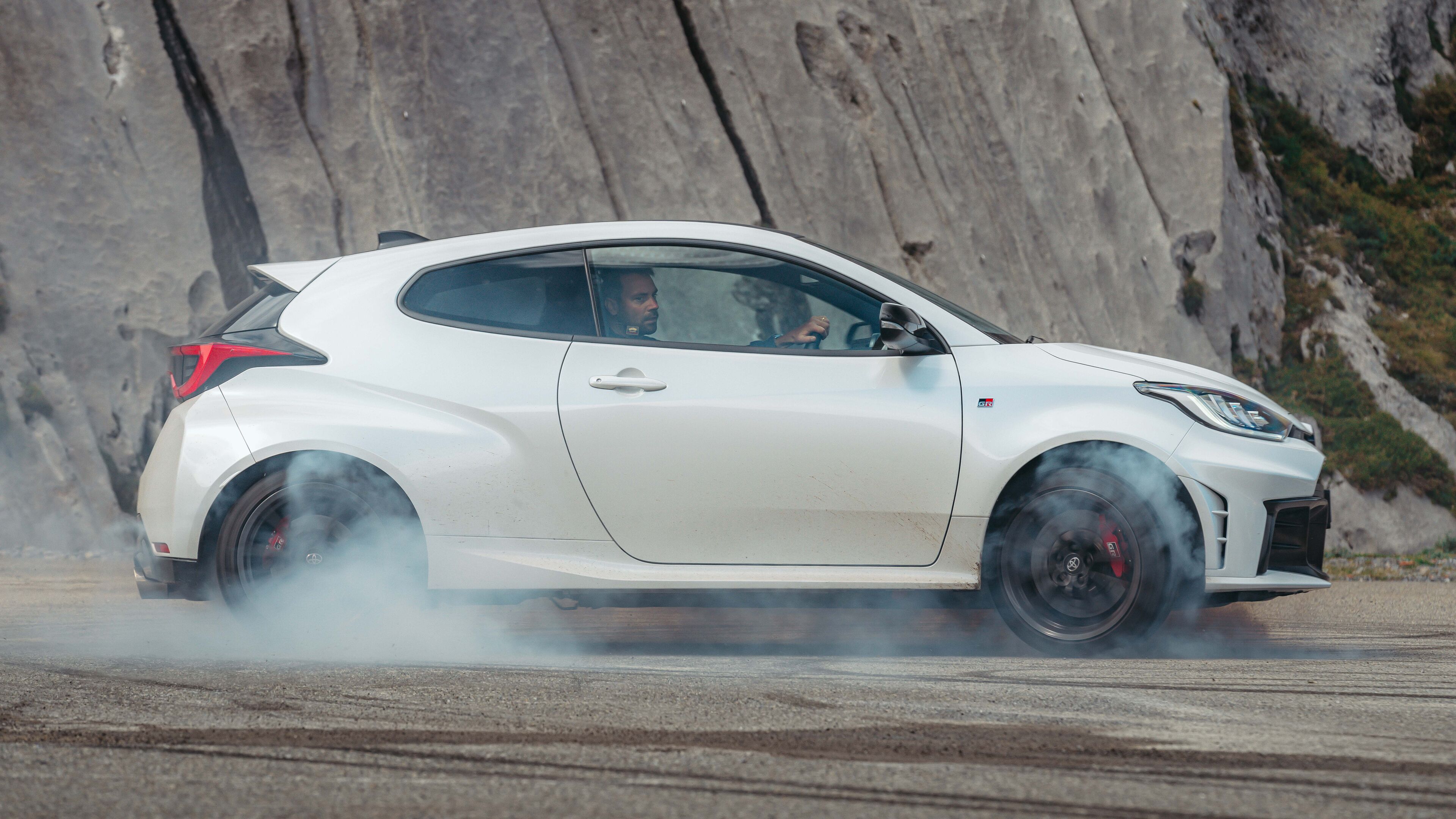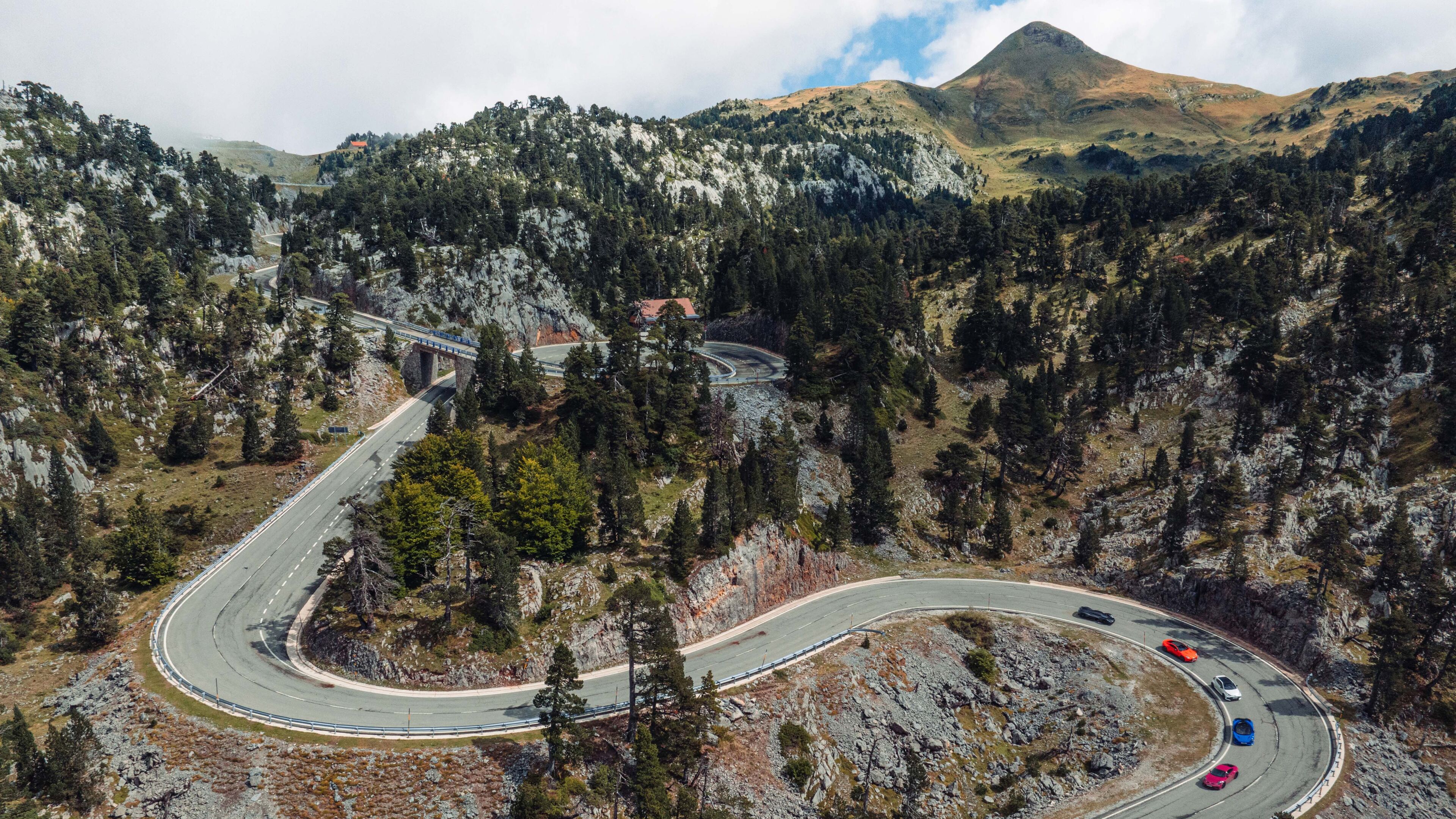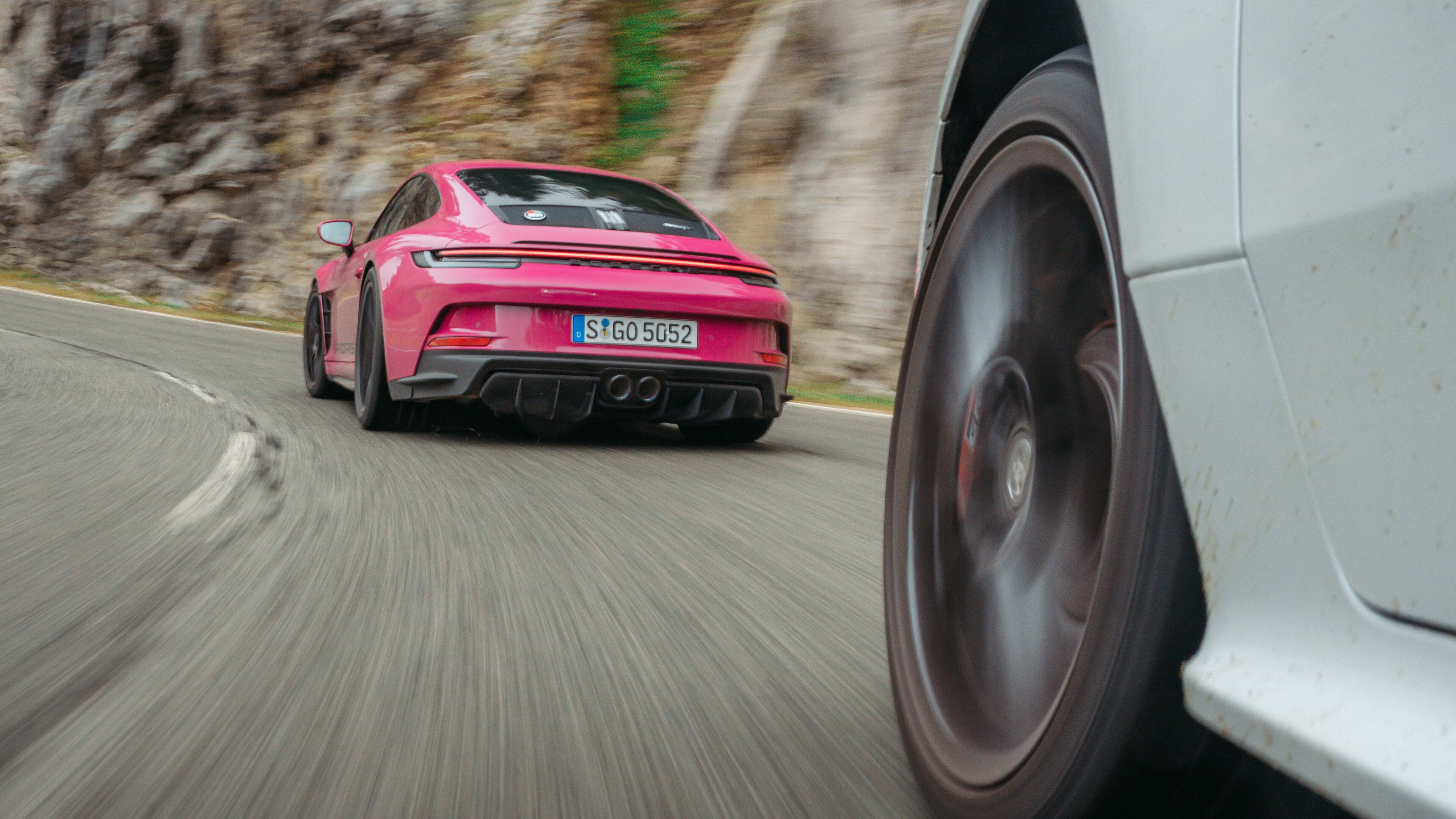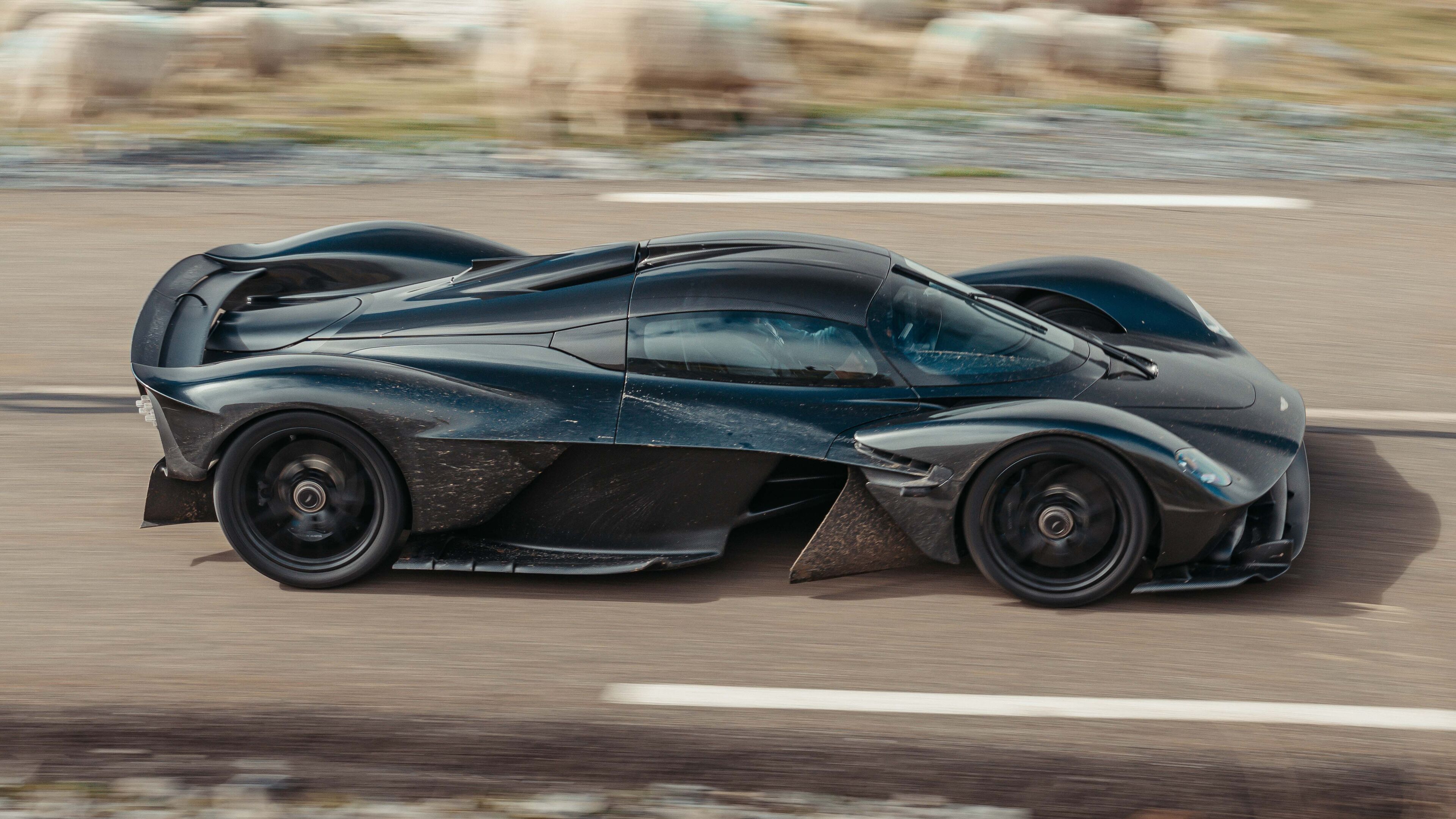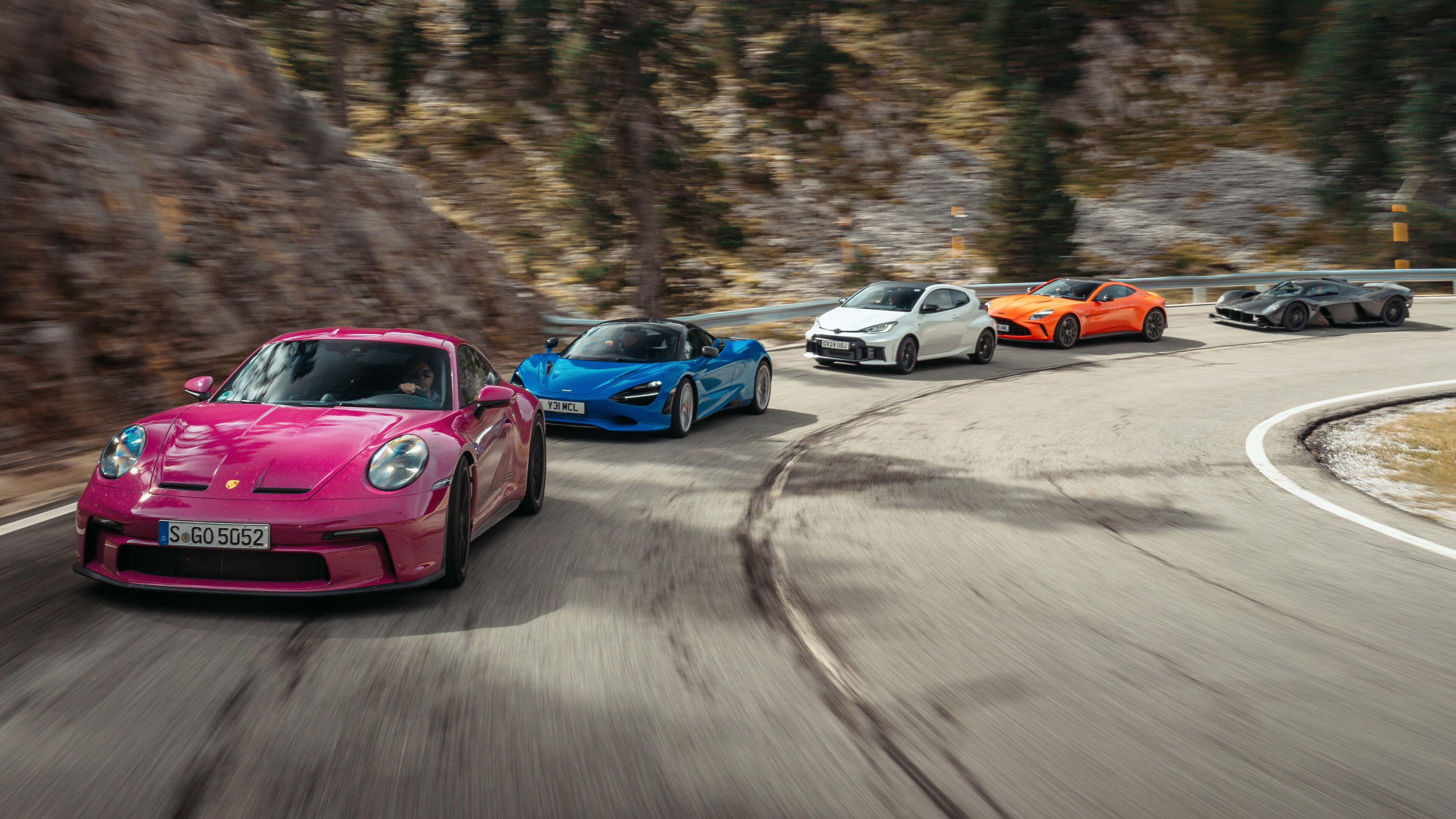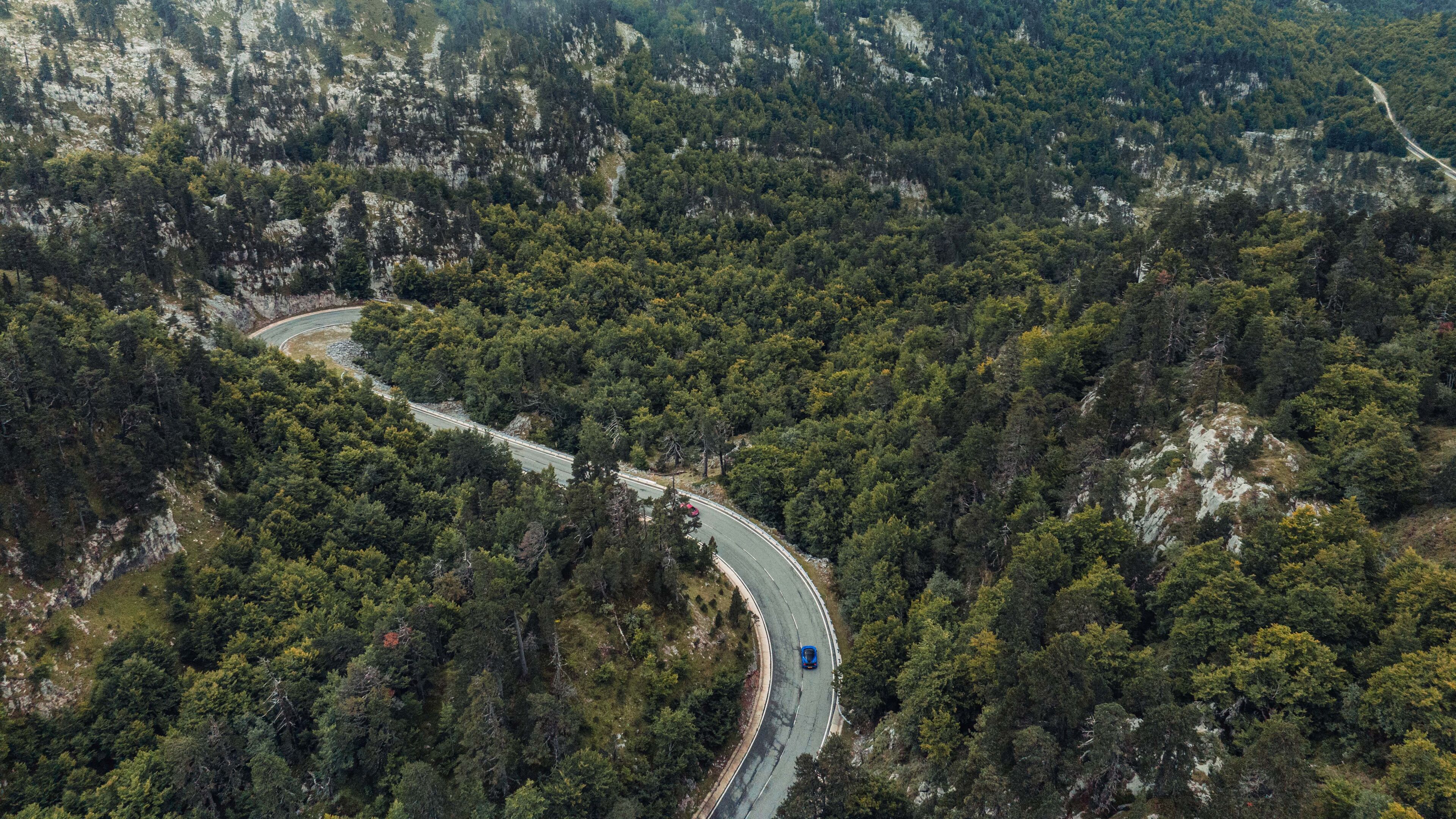
Speed Week 2024, the final five: what's the best performance car of the year?
Road is the great leveller. We take the five performance cars of the year up Piedra San Martín. Time to find our winner
Cows*** flow-vis. It plasters the Valkyrie’s barge boards, coats the delicate aero elements, clads the carbon. Provides a deeper boundary layer than regular flow visualisation paint, but less actual... flow. Although that surely depends on the bowels of the ruminant involved. Either way, safe to say it’s not a new aero engineering technique that Adrian Newey needs to keep an eye on. The smell for one thing. And if it dries on...
Ah, the perils of being first up the Piedra San Martín early on a chilly, misty morning. The overnight deposits sit like mines on the tarmac, detonating under tyres, sending slurry shrapnel far and wide. Don’t follow too closely now.
And yet there’s the GR Yaris, tucked right up behind. It’s our pest. A nuisance. The fly the others will attempt to swat for the next two days. Forty-five grand snaps at the heels of two and a half million, and we couldn’t be happier. This is what Speed Week is all about. At the track the hierarchy is clear. Every car knows its place and the Yaris’s is, ooh, about half a lap behind the Valkyrie.
Photography: Mark Riccioni
Road is the leveller. Outright speed and grip count for nothing, it’s all about each car’s ability to immerse you in the experience of driving. All are capable of it – this is the best final group we’ve had in years.
You’ve already met our bookends. The Valkyrie was always going to go through. Who wouldn’t want to drive something so radical, so single minded, on a regular road? Not enough justification? It was intoxicating at Navarra, so full on it was overwhelming. A car that demanded utter focus, was exhausting to drive and yet needed time to appreciate. Time. Interesting concept where the Aston Martin Valkyrie is concerned. It breaks the first law of Speed Week – cars should be new within the past 12 months. We first asked for a Valkyrie for Speed Week – now let me get this right – five, yes, five years ago. Forgive us for taking liberties with our own constitution.
Toyota’s GR Yaris hasn’t fundamentally changed very much. But it didn’t need to. It nailed the template first time round, and has now undergone a little light fettling. It’s that rarest of things: a new hot hatch. Show me another. They’ve all gone. Of all the turmoil we’ve seen in the car world, the biggest head scratcher to me is the demise of the hot hatch. The demise of affordable performance cars full stop actually. We shake our heads at the £45k this costs, but it’s basically a quarter of the cost of the next most affordable car here.
Which isn’t Porsche’s £231,600 911 S/T. I wanted to dislike this car, to believe it was Porsche just cashing in, being lazy, smearing together GT3 Touring and GT3 RS and plonking some trite historical badge on the back. And then I drove it. Ah. Porsche has nailed it. And the biggest irritation of all is that you can’t have one, because the biggest winners of all are the lucky 1,963 who got an allocation and now have an investment that’s doubled in value.
If recent history tells us anything it’s that a McLaren won’t be an appreciating asset, which has made a secondhand 720S one of the great supercar bargains. It won Speed Week in 2017 and now it’s back for another go. Jokes. I don’t know how McLaren is going to begin selling a car that looks identical to a seven-year-old one, but if this was a new shape now, we’d all be cooing over it. It looks wicked. It’s also comprehensively re-engineered and on track was so fast, so complete, so confidence inspiring that it kept the Valkyrie on its toes.
Rounding out our top five is the car that surprised us the most. We had high expectations of the McLaren and Porsche coming in to Speed Week. The Aston Martin Vantage? That was in the possibles pile alongside the 911 GTS, Nomad 2 and Corvette Z06. But the Vantage came through with flying colours. It was just so exuberant on track, so up for it and matey, keen on a slide, but polished with it.
And docile on the road as it emerges into the soft early light of a sleepy, remote Pyrenean village. The V8 burbles and throbs, helping to massage feeling back into my left buttock, numbed, once again, by the carbon seat’s protruding edge as I got in. What a feelgood cabin though, great seats (once you’re in them), knurled knobs, expensively blended carbon and metal, the scent of leather, and actual physical controls on the Porsche-style console. Calibration, there’s a dull word, but as I crawl out of town it’s the one that comes to mind. The throttle, gearbox and steering do exactly what I hope, following my inputs exactly.
We’re soon into open, flowing curves and the Aston laps it up. No rush or hurry, even when piercing beams signal the scything McLaren’s arrival in my mirrors. It looks good back there, flat and precise where I can already feel movement and squish in the Aston’s suspension. Barrelling along, the Vantage is a deeply satisfying, laid back car, you don’t have to put much into it, but you get a lot back. There’s richness and depth here, and talent too.
Top Gear
Newsletter
Thank you for subscribing to our newsletter. Look out for your regular round-up of news, reviews and offers in your inbox.
Get all the latest news, reviews and exclusives, direct to your inbox.
After the valley come the hairpins, climbing up to Larra-Belagua. They’re tight, the kind you dread when you know there’s a GR Yaris not far behind. Historically, this would have been where Astons struggle. Not just a question of weight, but balance and response. Too much separation between front and rear axles would have led to scruffy understeer on turn in and scrappy oversteer on exit. You’d be waiting for the engine to get its act together. No longer. The Vantage’s front axle is wide and essentially unstickable. It will always grip harder than the rear, but both work in real harmony, helping each other out. So it’s balanced through the middle of a corner, and although it loves a slide on the way out, the rear end isn’t loose and sloppy, it wants to go forward. This is traction and momentum you can play accurately with because the chassis is so together and the twin-turbo V8 doesn’t understand the concept of lag.
I love this engine, from its old school V8 soundtrack to its new age ability to cruise at 30mpg. It’s a big, punchy motor, with great response and endless reserves of power. It never did escape the leopard-like 750S, which effortlessly stalked its mirrors the whole way up, but the new Vantage is that thrilling thing, a car that has just a fraction more power than the chassis can contain, a hint that it might flex and burst, Hulk-like, through its own bodywork.
We gather where the NA-137 curls back over itself. The Valkyrie is last to arrive – hardly surprising since its driver had to deal with harnesses, a removable steering wheel, a gullwing door that occasionally drops without warning and untangling headphone cables before they could even begin the startup procedure.
Driving the Valk is a bit like doing a hobby that involves a lot of equipment: skiing maybe, or scuba diving. It’s a pain in the arse to get sorted and ready, but once in the flow all that’s forgotten and it’s sheer bliss.
Ah, no, wait. Because there’s nothing blissful about the sound. If your surroundings involved bars on windows and concrete floors and walls while being exposed to this screaming thrash of white noise, this would be classified as torture, and various human rights organisations would get involved. But apparently it’s fine if you’ve paid £2.5 million (plus tax) and are ratcheted tight into a cramped carbon cell like a squeezed sausage. I’ve never driven a car with a wider separation between outside (V12 musical majesty) and inside (malevolent screech). It’s not just the noise, but the vibrations from the rigid-mounted V12 that are amplified through the carbon chassis. No consideration to refinement whatsoever.
Or fuel economy. The tank is a thimble that’ll need two refill trips today. And the brake pedal isn’t firm enough. And yet it’s so shockingly exotic in everything it does, so different and unusual and multifaceted, so pure and visionary and single minded. This should be the Le Mans template, not LMH. I can’t quite get my head around it as a road car. I drive for a few miles and it’s bizarre; ear defenders on, bathtub driving position, cold seeping into my left calf where it presses against the carbon chassis wall. But gradually the Valkyrie reveals itself. It steers cleanly and precisely, as little interference and as much feedback as the 750S or 911 S/T.
The ride is softer than either, there’s actually too much movement until you toughen it up, then you feel more connected and start to appreciate just what it’s capable of. It flits along lightly, deftly, an effortless blend of calmness and control. It drives how it looks, seeming to hover above the surface, its relationship with the road different to anything else here. It’s immensely absorbing, even if you can only tickle the edges of the V12. You’re not going to be hitting 11,000rpm, because above 8k the acceleration is so vivid you can’t process it on a narrow road.
There’s a reason we’ve come here, beside the fact it’s one of the world’s greatest driving roads. This is where I came last year with the GMA T.50. We tried so hard to get it back for this test, to get it together with the Valkyrie. It would have been a fascinating comparison. Because I think the T.50 drives like you expect the Valkyrie to drive, and vice versa. The T.50 is heavier in its control weights than you expect, the Valkyrie lighter. What might have been.
This is one of the world's greatest driving roads
But here today there’s only one. The Boss. The Don. They all bow before it. Except the sheep. No respecters of F1-inspired engineering, they’re already crossing the road, so I don’t even attempt to push through, just let woolly coats brush wind tunnel honed surfaces and hope for the best.
The Yaris would have torn off and herded them all up. We all love the tenacity of the GR, its pint-sized aggression and never-back-down determination. It’s the car most at home on this road, the one able to charge the hardest and give the most of itself. It’s the only one I relish taking over the tighter, gnarlier French side of the pass, because it’s a car that loves having a rough and tumble with the road, loves getting beaten up, keeps coming back for more.
It has fewer vices than it used to. The seat has been dropped 25mm, the chassis is stiffer, the spring rates changed and this all makes it a little more composed. I’ll never understand why people would want an auto gearbox in it – it’s simply not that sort of car – but the extra 19bhp and 22lb ft do make themselves felt. On track I’d expected it to run out of grunt and eagerness, but it didn’t, it was still pulling gamely in fifth. Up here it’s explosive out of hairpins in second, especially if you left foot brake and build the power through corners to get the turbo spooling, then unleash it.
It’s an instant hit of fun and amusement, against it the others all come across as a bit aloof, a bit self-aware. The Toyota charges gustily back and forth, up for anything and eager to please. But it’s still playing the same tune. If I had a MkI I don’t think I’d feel the need to upgrade to a MkII.
Question is, does the same apply to the 911 S/T and 750S? They, after all, are also merely tweaked versions of existing cars. And yet... It’s hard to put a finger on why they’re such an upgrade on what’s gone before. It’s the detail work, the time, energy and resources put into every element of them. Earlier this year the 750S met and beat Ferrari’s 296 GTB, and what struck me was that it felt more together than it ever had before. I was hard pushed to detect that it rode better or had more vivid throttle response but overall it was noticeably superior. There was a clarity to it that hadn’t been there before. Same goes for the Porsche. This one is shorn of tricks such as rear wheel steering, and yet it’s so agile into corners you’d swear it has it. I mean it’s essentially just a GT3 Touring that’s benefitted from the GT3 RS’s 518bhp flat six and carbon doors, but there’s a suppleness to it that I’m not sure I’ve ever felt in any 911 before. It drives expensively.
I get them together with the Vantage and head off to investigate. In isolation the Aston is a terrific car, but its rivals here weigh hundreds of kilos less. They’re defter and keener, don’t have to manage their weight, don’t need as much suspension travel to quell their movements. In part this is because they have a slightly different mindset. The Aston still requires cruising comfort. Porsche has other 911s to offer that, the McLaren is a full blooded supercar.
And yet neither is uncomfortable. I drove the S/T up here from Navarra yesterday evening, and it was calm. Apart from when I nailed it through tunnels. Yes, there’s tyre noise and the view through the plastic rear window is milky and the seat hunches my shoulders and back after a while, but I’d accept that as a trade-off. Because this is one of the all time great driving experiences. We made a film of the 911 S/T and in it I said I reckon this might be peak 911, the greatest there’s ever been. I stand by that. Until now it had been the 997.2 GT3 RS. But I’m blown away by the S/T. Precision, precision, precision, that’s the secret here. How it responds to millimetric adjustments in hands and feet, yet doesn’t have the Ferrari trait of being artificially over sharpened. It’s perhaps the most lavishly finessed sports car I’ve ever driven.
I hope all customer 750Ss are as well built and glitch-free as this one. Not a stutter or stumble from it, meaning downsides were limited to the hardcore race seats (shorn of comfort as well as weight) and the now abandoned flip display. What an extraordinary supercar this is. Rampant turbo power, mesmeric feedback, a genuine hunger for devouring roads, an ability to connect the driver as directly as shoving a plug into a socket and an experience pretty much as vivid and exciting as the Valkyrie. This is the complete supercar, and up here it’s wheeled dynamite.
Quite different to the Porsche though. That, with its fabulously stubby lever and ‘never miss a gear’ shift is all about mechanical tactility. It’s then easy to pigeonhole the McLaren as a ruthless pursuer of speed. Easy, but wrong. Like the Porsche, it’s tactility that is the McLaren’s special sauce. It’s early the next morning and we’re heading off. The McLaren crept back to the hotel last night with 15 miles of fuel remaining. The nearest fuel station doesn’t open for another hour. Too late. So I nurse the 750S 25 miles across yet another dazzling road at 33mpg. All I’ve got for company is the chassis and steering. And it’s wonderful. The roaring Vantage and yowling 911 come hurtling past, Yaris tucked up close behind, Valkyrie calmly shepherding its flock from the back. And still proudly clad in a stippled layer of cows***. Hell of a line-up of cars. The question is, which is best?
Decision time...
I’m going to deal with the Valkyrie first because it’s just so otherworldly it’s impossible to put it into a final line-up. It’s simultaneously the most flawed and life affirming car here. Fabulously dramatic, this is a hypercar drawn differently, eschewing the frippery and artistry of the breed in favour of motorsport exoticism. It bestrides this group like a colossus, dominates every conversation we have. It’s come, it’s proved itself and it goes down in the TG annals as perhaps the most memorable, exotic, intense road car we’ve ever driven. Condensing that into a number in a line-up is pointless.
On then to cars we can place. We need to celebrate the GR Yaris because, hell, it’s a hot hatch in 2024 and those are vanishingly rare. But it was also something of a one-trick pony. Now, hunting sports cars costing multiples more is a good trick, but the Yaris doesn’t have the depth and personality of the next car in line.
I can’t think of the last time an Aston Martin made it through to the final of Speed Week and this year we’ve got two. We’d love to be placing the Vantage higher up the order because it’s our biggest improver, a thunderously entertaining, warmhearted and charismatic sports car. Bit weighty and doughy compared to the best here, but really, Aston, well done indeed.
Excitement, that’s what made the difference in the end
You could see it as a pity that the two best cars here are so familiar in so many ways. We all want something new and exciting to come in and blow us away. But the truth is that genuine brilliance rarely emerges overnight. The designers and engineers behind the Porsche 911 S/T and McLaren 750S only know what they’re doing so intimately because they’ve got so much experience. And they’re both light. Under 1,400kg apiece. We need to point out once again what a huge advantage this is in every aspect of these cars. What we have here are twin peaks: peak sports car, peak supercar. No one out there builds better drivers’ cars than these. Both deserve to go down in the records as all time greats.
They are our top two at Speed Week 2024 by a relatively comfortable margin. Excitement, that’s what made the difference in the end. Sitting in the nose of the McLaren, scudding low over the tarmac, animated steering chattering away, turbos gusting and fading with the curves, the sheer, shocking force unleashed when you nail it. It’s those moments that had most of us convinced. Not a unanimous verdict, but enough. The winner of Top Gear’s Speed Week 2024 is the McLaren 750S.






